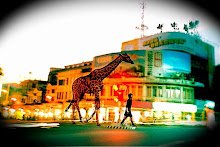MATHEMATICS PRIMARY 5
Learning Projects for Geometry: Chapter III
Etoys: Using Etoys, we can have the students make a book describing and giving examples of what a line, a ray, a line segment, acute angles, obtuse angles, right anges, reflex angle, bisecting angles, adjacent angles, complementary angles are. Through this, students can have a reference guide for all the different lines and angles and also have practice configuring these items using the line tool in the supply box.
Record: When learning about geometric figures and solids, we can ask the students to walk around the classroom or school identifying circles, triangles, squares, and rectangles around them. Students can then take pictures of these items and shapes using Record. These pictures can then be placed into a book in Etoys or in a Write document, labeling whatever information the teacher deems is necessary or appropriate. For example, Students may take pictures of the bottom of a water bottle (which would be a circle) and then write the equations for finding the circumference or area, and identifyig what a radius is next to it. Through this, students can learn the elements of shapes in a more real-life based, interactive way.
Measure: Using Measure, students can learn the properties of the various shapes. For example, when it comes to finding the area of a hexagon, the teacher can draw a picture of a square on the blackboard, and then have the students bring their XOs to measure the square and discover the area. Or, the teachers can ask the students to construct a hexagon with side lengths 4 cm, which the students can refer to Measure to do. For teaching the Pythagorean Theorem, the teacher can draw a triangle with side lengths of 3 cm and 4 cm, have the kids Measure the side lengths and use the a2 + b2 = c2 foruma discover that the hypotenuse is 5.
Memorize: By creating games in Memorize we can have the students match up equations with what they represent. For example, some of the card combinations can be "Area of a Triangle" which can be matched with "1/2 base x height". Another example could be "6 equal faces, 8 vertices, and 12 edges" which could be aired with "cube". Another could be "Surface Area of a cube "6 x Sides (squared)". If students can familiarize themselves with this game, this would meann that they have sufficiently memorized the important equations of geometry.
Calculate: Being that not many of the students have experience working with calculators, Calculate can be a tool used to teach them how to find the answers to equations. For instance, if they are given the task of finding the the surface area or the volume, they can use Calculate to do the basic math. In this way, if they get the answer wrong on their homework, it will be because they dont understand the formula, not because they made a mistake with their basic math.
Turtle Art: Turtle Art is an ideal program for used with teaching Geometry. By telling the Turtle to make various anges or to make lines of certain lengths, TurtleArt is prime for teaching children the elements of a shape. Also because giving Turtle Instructions to move requires such specific number, it is really easy for the children to create shapes and to figure out their area or perimeters. For example, a teach can instruct the students tomake a rectange with side lengths of 4 and 6. Then, once the students have made the rectangle, they can easily discover the Perimenter (2 x width)+(2 x length), which would be (2 x 4)+(2 x 6)=20. They can also be easily instructed to easily find the Area, which would be (length x width), which would be (4 x 6) = 24. Further, even for the construction of circles, students can learn about radius, circumferences, and perimenters. Which, can then be used to learn the area of a circle and all the different elements of a circle
Tuesday, June 29, 2010
Subscribe to:
Post Comments (Atom)

No comments:
Post a Comment